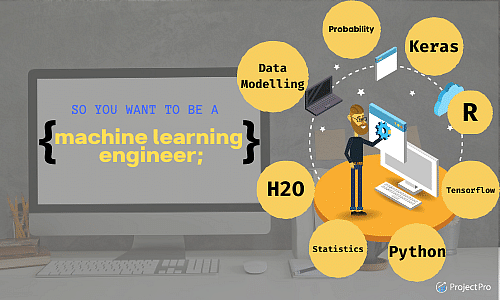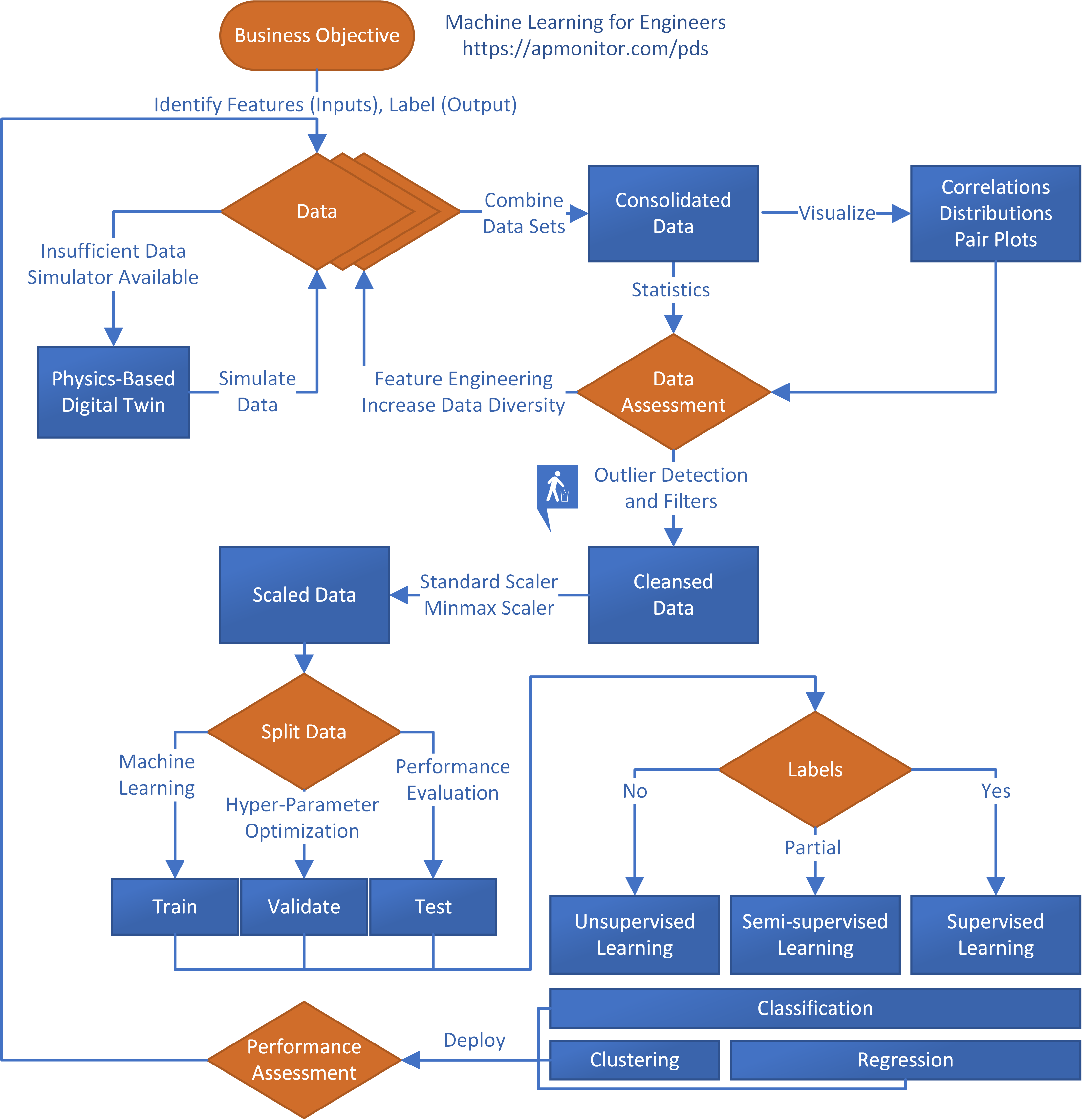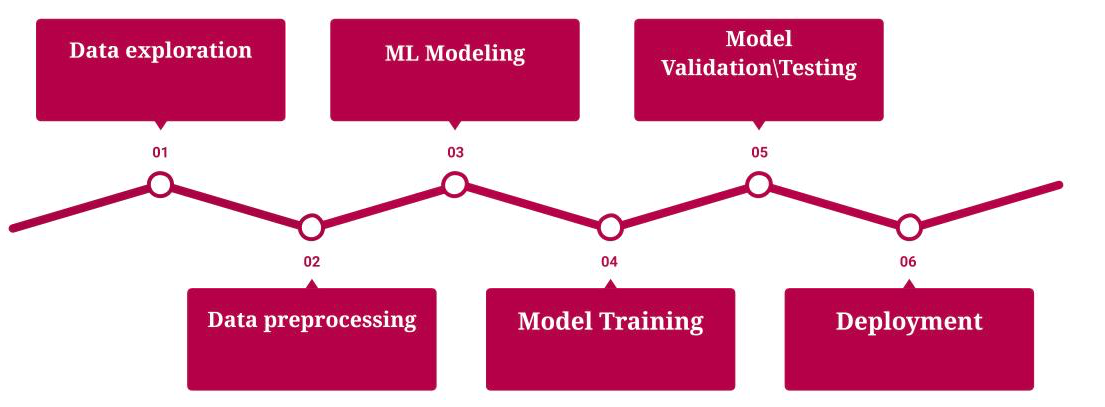All Categories
Featured
Table of Contents
- – Best Machine Learning Courses & Certificates [...
- – Our Machine Learning Devops Engineer Ideas
- – 7-step Guide To Become A Machine Learning Eng...
- – Indicators on Machine Learning In Production ...
- – Our Top 20 Machine Learning Bootcamps [+ Sel...
- – Facts About Pursuing A Passion For Machine L...
- – The 5-Minute Rule for Top 20 Machine Learnin...
Some people assume that that's unfaithful. Well, that's my whole job. If someone else did it, I'm mosting likely to use what that individual did. The lesson is putting that apart. I'm requiring myself to believe with the feasible options. It's more about taking in the web content and trying to use those concepts and less concerning finding a library that does the work or finding somebody else that coded it.
Dig a little bit deeper in the mathematics at the beginning, simply so I can develop that structure. Santiago: Ultimately, lesson number 7. I do not think that you have to comprehend the nuts and screws of every algorithm before you use it.
I have actually been using semantic networks for the lengthiest time. I do have a sense of exactly how the gradient descent functions. I can not explain it to you now. I would certainly need to go and examine back to really get a much better intuition. That does not imply that I can not address points utilizing neural networks? (29:05) Santiago: Attempting to require people to believe "Well, you're not going to succeed unless you can discuss each and every single detail of how this functions." It goes back to our sorting instance I believe that's simply bullshit recommendations.
As an engineer, I've worked on several, lots of systems and I have actually utilized lots of, lots of points that I do not recognize the nuts and screws of how it works, despite the fact that I understand the effect that they have. That's the final lesson on that thread. Alexey: The funny point is when I think of all these collections like Scikit-Learn the formulas they make use of inside to execute, for example, logistic regression or something else, are not the exact same as the algorithms we research in artificial intelligence courses.
Best Machine Learning Courses & Certificates [2025] for Beginners
Also if we tried to discover to obtain all these essentials of machine learning, at the end, the formulas that these collections use are various. Right? (30:22) Santiago: Yeah, absolutely. I believe we need a whole lot more pragmatism in the industry. Make a great deal even more of an impact. Or concentrating on delivering worth and a little bit less of purism.

I typically talk to those that desire to function in the market that want to have their impact there. I do not risk to speak concerning that since I do not understand.
However right there outside, in the sector, materialism goes a lengthy method without a doubt. (32:13) Alexey: We had a comment that claimed "Really feels more like inspirational speech than talking about transitioning." So possibly we need to switch over. (32:40) Santiago: There you go, yeah. (32:48) Alexey: It is a great motivational speech.
Our Machine Learning Devops Engineer Ideas
One of the points I wanted to ask you. First, allow's cover a pair of things. Alexey: Allow's start with core devices and structures that you require to discover to actually change.
I recognize Java. I know SQL. I know just how to use Git. I understand Celebration. Maybe I know Docker. All these things. And I become aware of machine knowing, it appears like a trendy point. So, what are the core devices and frameworks? Yes, I saw this video clip and I obtain encouraged that I don't require to obtain deep right into mathematics.
Santiago: Yeah, definitely. I assume, number one, you ought to begin learning a little bit of Python. Considering that you currently know Java, I don't assume it's going to be a significant shift for you.
Not due to the fact that Python coincides as Java, yet in a week, you're gon na get a whole lot of the distinctions there. You're gon na have the ability to make some development. That's leading. (33:47) Santiago: After that you get particular core tools that are going to be made use of throughout your entire career.
7-step Guide To Become A Machine Learning Engineer In ... - Truths
You obtain SciKit Learn for the collection of machine knowing formulas. Those are tools that you're going to have to be utilizing. I do not advise just going and learning about them out of the blue.
We can speak about details courses later on. Take among those courses that are going to start introducing you to some problems and to some core ideas of artificial intelligence. Santiago: There is a course in Kaggle which is an intro. I don't keep in mind the name, yet if you go to Kaggle, they have tutorials there absolutely free.
What's excellent about it is that the only requirement for you is to understand Python. They're mosting likely to offer a problem and inform you how to use decision trees to solve that particular issue. I believe that process is exceptionally effective, due to the fact that you go from no equipment discovering background, to comprehending what the issue is and why you can not solve it with what you recognize right currently, which is straight software application engineering practices.
Indicators on Machine Learning In Production You Need To Know
On the other hand, ML engineers concentrate on building and deploying machine knowing designs. They concentrate on training designs with data to make predictions or automate jobs. While there is overlap, AI designers handle even more varied AI applications, while ML designers have a narrower concentrate on artificial intelligence algorithms and their practical implementation.

Artificial intelligence designers concentrate on developing and releasing artificial intelligence models into production systems. They service design, making sure designs are scalable, reliable, and incorporated into applications. On the various other hand, data researchers have a more comprehensive duty that consists of information collection, cleaning, expedition, and structure designs. They are usually in charge of extracting understandings and making data-driven choices.
As organizations increasingly adopt AI and machine understanding technologies, the need for skilled professionals expands. Maker discovering engineers service advanced projects, add to development, and have affordable incomes. Nonetheless, success in this area needs continuous knowing and maintaining up with developing innovations and techniques. Artificial intelligence functions are generally well-paid, with the potential for high making potential.
ML is essentially different from traditional software advancement as it concentrates on teaching computer systems to pick up from data, as opposed to programming explicit guidelines that are executed methodically. Unpredictability of results: You are most likely used to composing code with predictable results, whether your function runs as soon as or a thousand times. In ML, however, the outcomes are less certain.

Pre-training and fine-tuning: Exactly how these designs are educated on large datasets and then fine-tuned for specific tasks. Applications of LLMs: Such as message generation, belief analysis and details search and access.
Our Top 20 Machine Learning Bootcamps [+ Selection Guide] Statements
The ability to take care of codebases, combine modifications, and settle disputes is equally as essential in ML development as it remains in traditional software jobs. The abilities developed in debugging and testing software program applications are very transferable. While the context might transform from debugging application reasoning to identifying concerns in data handling or design training the underlying principles of methodical examination, theory testing, and repetitive refinement coincide.
Equipment understanding, at its core, is greatly dependent on statistics and likelihood concept. These are essential for recognizing just how formulas discover from information, make predictions, and review their performance.
For those interested in LLMs, an extensive understanding of deep discovering designs is beneficial. This includes not just the mechanics of semantic networks however likewise the design of certain designs for different use instances, like CNNs (Convolutional Neural Networks) for picture handling and RNNs (Reoccurring Neural Networks) and transformers for consecutive data and natural language processing.
You ought to know these problems and learn strategies for identifying, reducing, and communicating concerning bias in ML models. This consists of the prospective effect of automated choices and the honest implications. Several designs, specifically LLMs, call for considerable computational sources that are commonly given by cloud systems like AWS, Google Cloud, and Azure.
Building these abilities will certainly not just assist in an effective shift right into ML but also make sure that programmers can add efficiently and sensibly to the improvement of this dynamic area. Concept is crucial, but nothing beats hands-on experience. Beginning functioning on tasks that enable you to use what you have actually discovered in a practical context.
Build your jobs: Beginning with simple applications, such as a chatbot or a text summarization device, and gradually raise complexity. The field of ML and LLMs is swiftly evolving, with new advancements and innovations emerging routinely.
Facts About Pursuing A Passion For Machine Learning Revealed
Contribute to open-source tasks or compose blog site posts regarding your learning journey and tasks. As you gain competence, begin looking for chances to include ML and LLMs right into your work, or look for brand-new duties focused on these innovations.

Vectors, matrices, and their duty in ML formulas. Terms like version, dataset, functions, tags, training, inference, and recognition. Data collection, preprocessing strategies, version training, evaluation procedures, and implementation considerations.
Choice Trees and Random Forests: User-friendly and interpretable designs. Assistance Vector Machines: Optimum margin classification. Matching trouble kinds with appropriate models. Balancing performance and intricacy. Standard structure of neural networks: neurons, layers, activation functions. Layered calculation and ahead breeding. Feedforward Networks, Convolutional Neural Networks (CNNs), Persistent Neural Networks (RNNs). Image recognition, sequence prediction, and time-series analysis.
Continuous Integration/Continuous Deployment (CI/CD) for ML operations. Design tracking, versioning, and performance tracking. Finding and attending to changes in design performance over time.
The 5-Minute Rule for Top 20 Machine Learning Bootcamps [+ Selection Guide]

You'll be introduced to 3 of the most relevant parts of the AI/ML technique; monitored understanding, neural networks, and deep knowing. You'll grasp the differences between standard shows and device learning by hands-on development in monitored knowing before developing out complex distributed applications with neural networks.
This training course functions as a guide to device lear ... Program Extra.
Table of Contents
- – Best Machine Learning Courses & Certificates [...
- – Our Machine Learning Devops Engineer Ideas
- – 7-step Guide To Become A Machine Learning Eng...
- – Indicators on Machine Learning In Production ...
- – Our Top 20 Machine Learning Bootcamps [+ Sel...
- – Facts About Pursuing A Passion For Machine L...
- – The 5-Minute Rule for Top 20 Machine Learnin...
Latest Posts
Best Free & Paid Coding Interview Prep Resources
The Best Online Platforms For Faang Coding Interview Preparation
Director Of Software Engineering – Common Interview Questions & Answers
More
Latest Posts
Best Free & Paid Coding Interview Prep Resources
The Best Online Platforms For Faang Coding Interview Preparation
Director Of Software Engineering – Common Interview Questions & Answers